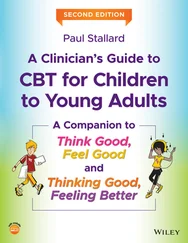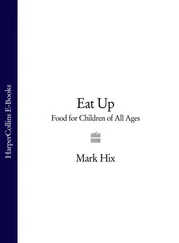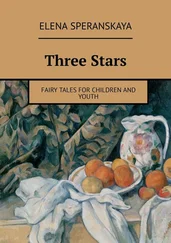Table 2.3 Examples of local and national prescribing guidelines.
| LOCAL GUIDANCE |
NATIONAL GUIDANCE |
| The team, service or condition you are working withinNHS organisation/employerGeographical region |
NICE or SIGN guidanceNational networksClinical groups orCharities |
NICE Prescribing Guidance
The National Institute for Health and Care Excellence (NICE) is a non‐departmental public body that provides national guidance and advice to improve health and social care in England.
NICE guidelines make evidence‐based recommendations on a wide range of topics including:
Preventing and managing specific conditions
Improving health
Managing medicines in different settings
Providing social care and support to adults and children
Planning broader services and interventions to improve the health of communities
Within each NICE guideline there are recommendations regarding the care (including medications) and services that are suitable for most people with a specific condition or need. NICE guidelines are used by NHS England and NHS clinical commissioners to develop services and are a reference guide for healthcare professionals, with recommendations about medications that should and should not be prescribed. The guidelines also cover areas that patients should be able to manage themselves and obtain, if necessary, appropriate over the counter medications.
In your area of practice chose a medical condition that you are familiar with.
Check to see if there is a local (to your trust/employer) and/or national guideline for this condition
Is the guidance the same as within the BNFc?
Are there are any differences in recommendations? If so, think why this may be
Scottish Intercollegiate Guidelines Network (SIGN)
The Scottish Intercollegiate Guidelines Network (SIGN) was formed to improve the quality of healthcare for patients in Scotland by reducing variation in practice and outcome. SIGN collaborate with a network of clinicians, other health and social care professionals, patient organisations and individuals to develop evidence‐based guidelines. SIGN guidelines are based on a systematic review of the scientific literature and are aimed at aiding the translation of new knowledge into action. The guidelines are intended to:
Help health and social care professionals and patients understand medical evidence and use it to make decisions about healthcare
Reduce unwarranted variations in practice and make sure patients get the best care available, no matter where they live
Improve healthcare across Scotland by focusing on patient‐important outcomes (SIGN Guidelines/Scottish Intercollegiate Guidelines Network)
NICE and SIGN both produce patient booklets that are a lay translation of the clinical guidelines. These booklets explain the recommendations in the clinical guideline and help to make patients aware of the treatment they should expect to receive. They are intended to:
Help patients and carers understand the latest evidence about diagnosis, treatment and self‐care
Empower patients to participate fully in decisions about the management of their condition in discussion with healthcare professionals
Highlight where there are areas of uncertainty in the management of their condition. (SIGN Guidelines/Scottish Intercollegiate Guidelines Network)
This chapter has provided an overview of the main pharmaceutical and prescribing reference guides used within clinical practice. Guidance has been given to encourage you to start to navigate the BNFc in particular, to ensure you know where to find all the information needed about any medicinal product or device to ensure safe and effective practice. The differences between paper‐based and online versions have been highlighted to ensure you are aware where to access the most up‐to‐date and accurate drug information.
1 Pryor, C. and Hand, A. (2021) How to use pharmaceutical and prescribing reference guides. In: Fundamentals of Pharmacology: For Nursing and Healthcare Students (ed. Peate, I. and Hill, B.), 15–32. Oxford: Wiley.
2 Joint Formulary Committee (2019a). How BNF Publications are Constructed: Assessing the Evidence. Joint Formulary Committee. https://bnf.nice.org.uk/about/how‐bnf‐publications‐are‐constructed.html(accessed 17 September 2019).
3 Joint Formulary Committee (2019b). British National Formulary: How to Use BNF Publications Online. London: Joint Formulary Committee. https://bnf.nice.org.uk/about/how‐to‐use‐bnf‐publications‐online.html(accessed 17 September 2019).
4 Medications and Healthcare products Regulatory Agency (2009). Paracetamol 500mg tablets (paracetamol) PL31308/0007‐9 UK Public Assessment Report. Medications and Healthcare products Regulatory Agency. Available: www.mhra.gov.uk/home/groups/par/documents/websiteresources/con071056.pdf(accessed 17 September 2019).
5 Nursing and Midwifery Council (2018a). The Code: Professional Standards of Practice and Behaviour for Nurses, Midwives and Nursing Associates. The Nursing and Midwifery Council. www.nmc.org.uk/standards/code/(accessed 20 September 2019).
6 Nursing and Midwifery Council (2018b). Standards of Proficiency for Nursing Associates. Nursing and Midwifery Council. www.nmc.org.uk/standards/code/(accessed 20 September 2019).
1 Electronic Medicines Compendium: www.medicines.org.uk/emc
2 National Institute for Health and Care Excellence (NICE) Information on medicines and Prescribing: www.nice.org.uk/about/nice‐communities/medicines‐and‐prescribing
3 Joint Royal Colleges of Ambulance and Liaison Committee (JRCALC): www.jrcalc.org.uk/
4 Scottish Intercollegiate Guidelines Network (SIGN): www.sign.ac.uk
5 UK Drug Tariff: www.nhsbsa.nhs.uk/pharmacies‐gp‐practices‐and‐appliance‐contractors/drug‐tariff
Multiple Choice Questions
1 Which of the following are all pharmaceutical reference guides?MIMS, NICE and emcSIGN, BNFc and MIMSBNFc, MIMS and emc
2 What does the BNF stand for?British National FormularyBritish National FormulationsBranded National Formulary
3 How many times a year is the BNFc published?Once TwiceThree times
4 Does the BNF/BNFc detail all the information necessary for prescribing and dispensing?Yes alwaysNot alwaysNo
5 What does PoM stand for?Pharmacy‐only medicinePrescribed oral medicinePrescription‐only medicine
6 MIMS is primarily intended for use in which healthcare setting?All healthcare settingsPrimary careSecondary care
7 Within MIMS how are you able to search for a drug?By drug nameBy conditionBy manufacturerAll of the above
8 What does the abbreviation p.c. mean?Before foodWith foodAfter food
9 Where will you find the ‘blacklist’?Within the BNFWithin the Drug TariffWithin NICE
10 On a device what does the CE mark signify?That the device has been tried and tested and is safe to useThat the device can be prescribedThat the device has a copyright protection
11 How often is the Drug Tariff updated?ContinuallyWeeklyMonthly
12 Which document informs healthcare professionals on how to prescribe and use a medicine correctly?A clinical trial paperProduct InformationSummaries of Product Characteristics
13 A PIL is a medicine leaflet written for whom?Healthcare ProfessionalsPharmacy staffPatients and their carers
14 Where will you find the most up‐to‐date information about the use of medicines?BNFc/MIMS paper copyBNFc/MIMS onlineNICE guidance
15 You find an outdated BNFc being used within a clinical area, what should you do?Nothing, it is still safe to use an outdated BNFcNothing, as it is not your place to say anythingSpeak to a senior member of staff to get it replaced with an up‐to‐date version
Читать дальше











